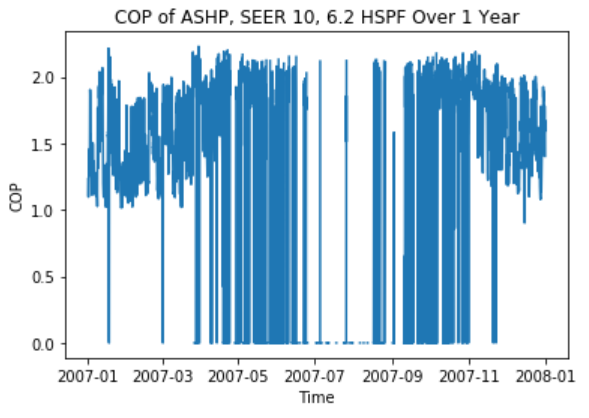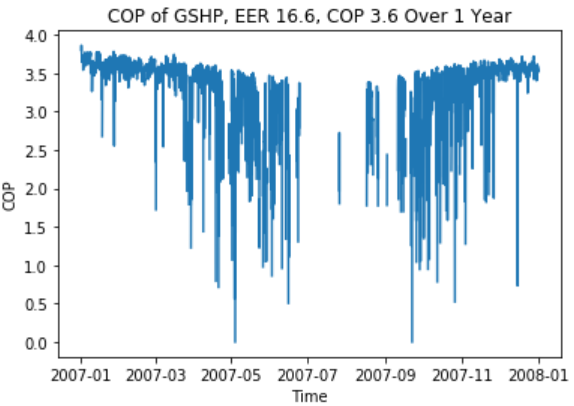Best variables to use to capture hour-by-hour COP
I am trying to capture the instantaneous COP of various HVAC system upgrades on project_singlefamilydetached homes. Analysis is conducted using the timeseries.csv that's produced for each building after running simulations on Parametric Analysis Tool. My methodology is the following:
1.Add the values contained in:
`ZONE AIR SYSTEM SENSIBLE HEATING ENERGY (FINISHED BASEMENT ZONE) [J]`
`ZONE AIR SYSTEM SENSIBLE HEATING ENERGY (LIVING ZONE) [J]`
`ZONE AIR SYSTEM SENSIBLE HEATING ENERGY (UNFINISHED ATTIC ZONE) [J]`
The sum of those three values will serve as my "energy out"
2.Divide "energy out" by the Joule equivalent of electricity_heating_kwh (i.e. energy in) to get the COP at that timestep (energy out / energy in = COP)
However, doing the above produces somewhat odd results. For example, the following are graphs that display COP vs. Time for two upgrades: ASHP and GSHP.
ASHP

GSHP

The above two graphs describe the same building, using the same seed value in the Algorithm settings, with all other factors being the same except the HVAC System.
Why does the COP dramatically decrease and become extremely variable during the summer? Am I not capturing the entirety of "energy out" of the HVAC upgrade by summing up those three variables? Is electricity_heating_kwh not an accurate variable for representing the true energy usage of the HVAC system? Any help would be appreciated.




